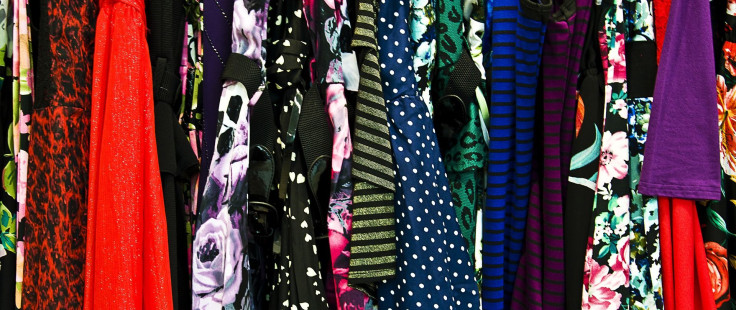Is My Cluttered Closet A Sign Of Being A Hoarder? Why It‘s So Hard To Throw Away Old Clothes

As I stood in my closet holding up an Abercrombie & Fitch sweater my mom bought me when I was 15 years old, I felt a pang of connection. I probably hadn’t worn the faded knit pullover in five years, but for some reason, I couldn’t seem to let it go, along with the rest of my clothing. I quickly recognized this was a mild, though common, form of hoarding.
According to the Anxiety and Depression Association of American (ADAA), a person suffers from hoarding when they have a difficult time discarding or parting with their possessions. It doesn’t matter if it’s a collectible piece of memorabilia worth thousands of dollars, or if it’s a ratty old t-shirt from college; you can’t let it go.
“What if I need it one day?”
That day often never arrives and then things pile up and overwhelm your life. Drawers overflow, and closets are stuffed with things you never wear or use. This psychological disorder goes well beyond the surface. It’s not just collecting things; it’s a dysfunctional behavior that causes emotional, physical, social, and financial problems. Hoarding may present on its own or act as a symptomatic cloak for another disorder, such as obsessive compulsive disorder (OCD), attention deficit hyperactivity disorder (ADHD), or even depression.
Hoarding is also often related to compulsive buying patterns, such as shoppers who can never opt out of a great deal or pass up a BOGO sale. Sure, they may not need another set of spatulas or the newest foreman grill, but it’s a “special offer” that you need to order before the commercial ends.
Hoarders don’t need to make compulsive purchases in order to acquire more unnecessary baggage in their lives. It could be a seemingly innocuous habit of keeping old receipts or paystubs from jobs long ago, or newspapers with your favorite news articles you may want to show someone or read again one day. Or maybe you have all of your kids’ baby teeth or every single poem, card, or picture they’ve ever given to you. Whatever it is, you may have too much of it — endearing as it is to keep your middle-aged sons’ report cards from elementary school, you don’t need them.
The disorder usually rears its ugly head after experiencing a stressful or traumatic event that drives people to hoard as a coping mechanism. Tendencies begin between ages 11 and 15, in the form of keeping broken toys and old school papers. However severe hoarding more commonly occurs in middle-aged adults around the age of 50.
"You hold onto things based on hope," recovered hoarder June Saruwatari and author of Behind the Clutter, said in an interview with Fast Company. “You hope to lose weight, catch up on reading, finish that abandoned project. But when you don't, it's hard not to feel like a jerk about it. How much stuff do you really need to represent that thing? How many items do you need to hold onto before it starts controlling your life?"
Drowning in junk that you don’t need can cripple you and make it difficult to socialize knowing you have a hurricane of a living room waiting for you back home. According to licensed mental health counselor Gregory L. Jantz, PhD, experts are discovering hoarding is a more common disorder than previously thought. One in four people diagnosed with OCD are also compulsive hoarders. But regardless of whether or not the hoarder has another mental disorder, according to Jantz, it’s always accompanied by anxiety, especially when forced to make a decision about an inanimate object.
But for those of us who keep holding on to a favorite childhood stuffed animal or old algebra notebooks, you’re probably not a hoarder. According to the ADAA, if you experience severe anxiety about discarding possessions, feel suspicious about other people touching possessions, or develop obsessive thoughts about possessions, such as a fear of running out of an item - you may be a hoarder.
To find out if you have hoarding tendencies, or if you’re a full-blown hoarder, test yourself at home with a Compulsive Hoarding test. But always check in with a mental health professional or your general practitioner to see if your behavior is getting in the way of living a healthy, normal life.
If you've got a mild case of pack rat tendencies, there's hope. To learn how to let go of your favorite pair of sweatpants — you know, the ones with the tattered holes at the bottom — listen to decluttering guru and Japanese organizing consultant Marie Kondo. Tackle one room at a time and learn how to respect your belongings. Nostalgia is not your friend, which is why you need to disconnect and sacrifice the emotions you have for your things in exchange for a clutter-free life.



























